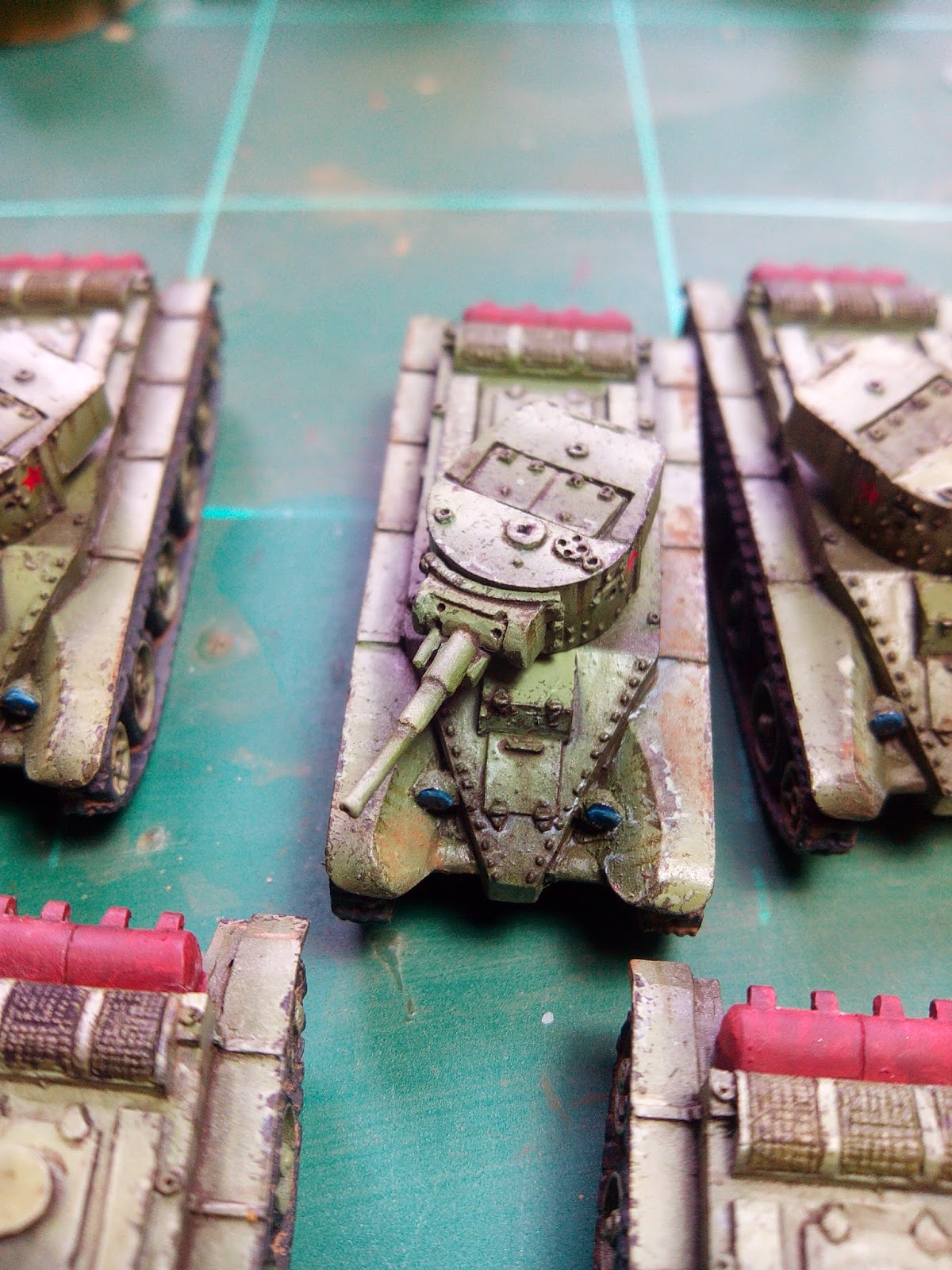
The BT-5 entered service in 1933 and, with gradual deliveries until 1935,
equipped all armored cavalry brigades. The first active engagements came in
Spain, in 1937, when a batch of 100 was shipped to the Republicans. They took
part in the defense of Madrid. Some were captured later and saw service with the
Nationalist Spanish state. Two brigades (6th and 11th Tank Brigade) were sent in
the Far East, on the Sino-Russo-Mongolian border to face Japanese incursions of
the time. They proved instrumental at Khalkin Gol, with many BT-7s, proving too
fast for the Japanese AT teams and still deadly for any AVFs deployed. However,
they proved vulnerable to "close quarter" Japanese teams armed with Molotov
cocktails.

Not long after, they were deployed in eastern Poland. They
also soldiered during the "Winter War" in Finland, proving ill-adapted for the
task with their thin armor. Losses were appalling. Finnish troops used Molotov
cocktails as well and quickly found a weak point where the engine was installed,
prone to catch fire and explode when hit, as shown in reports. In 1941 there
were still hundreds of BT-5s in service despite the type having been replaced by
the BT-7. But hundreds were lost or abandoned, worn out, during the summer
offensive, liquidating what was left of the model. Only the lack of spare parts
prevented the use of surviving vehicles until later in the war.

More information on
http://www.tanks-encyclopedia.com/ww2/soviet/soviet_BT-5.php

































